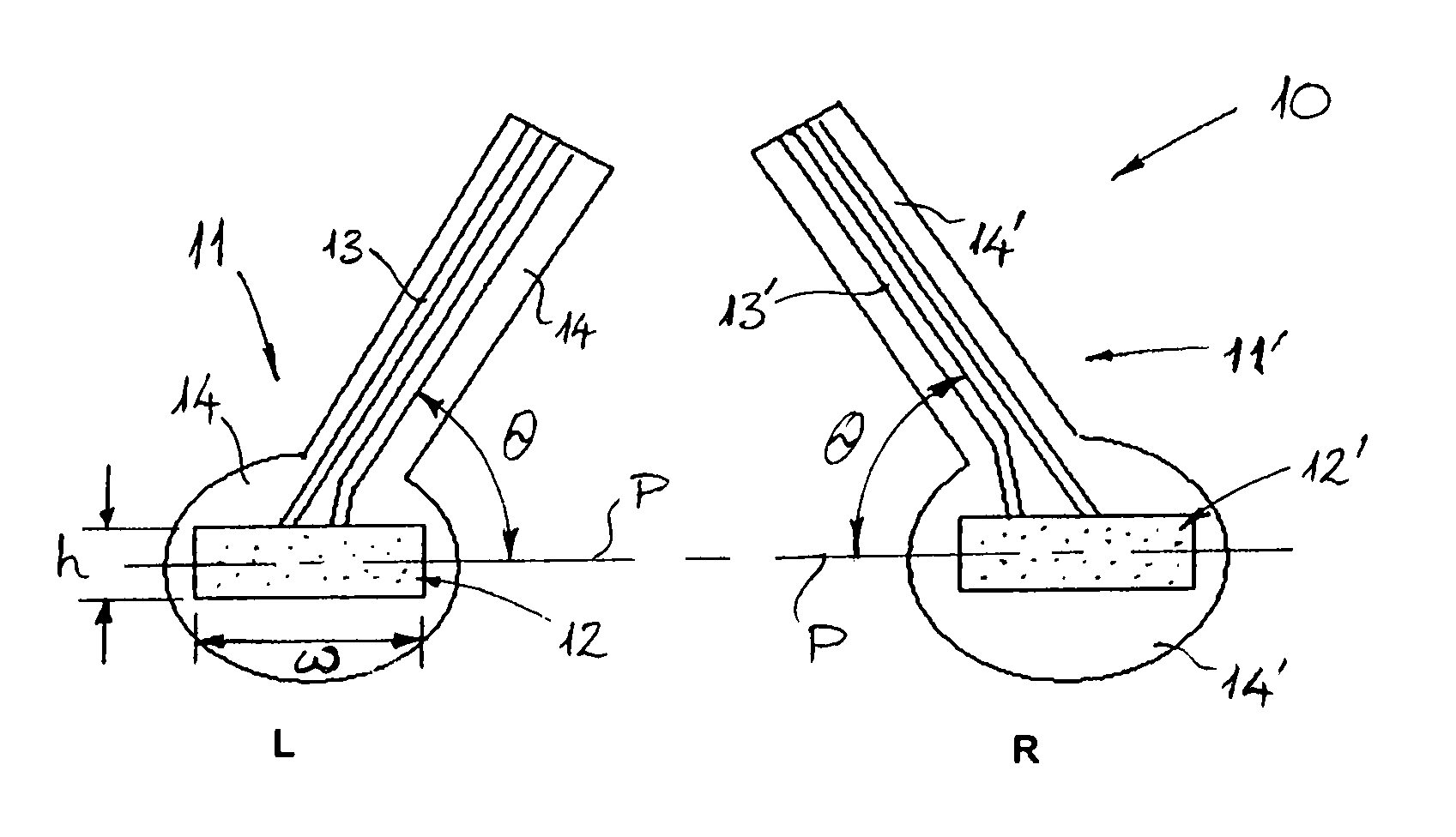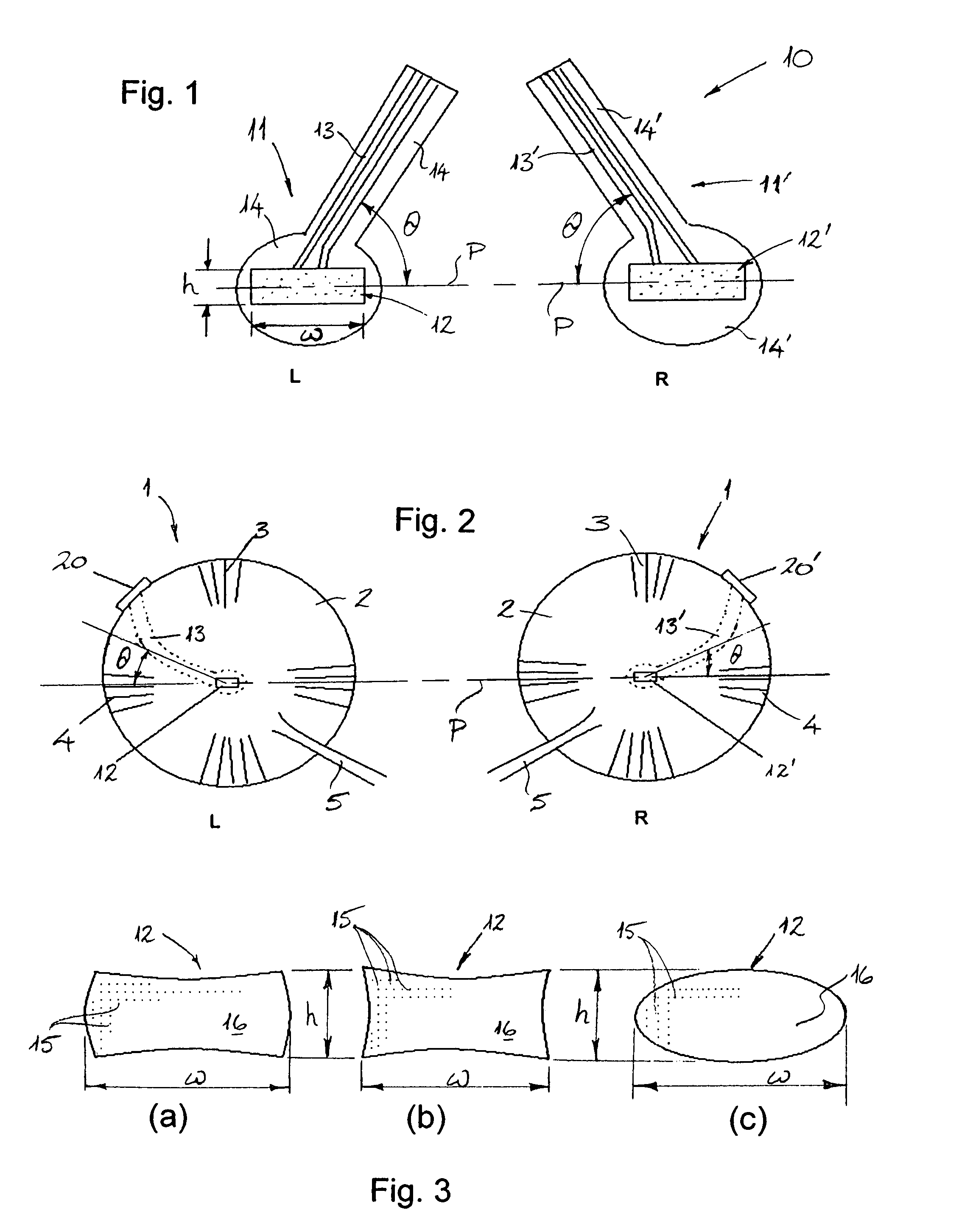Visual prosthesis and retina stimulation device for same
a retina stimulation and prosthesis technology, applied in the field of visual prosthesis, can solve the problems of insufficient energy level of incident light to provoke nerve cell depolarization, and achieve the effect of optimal stimulation of retina nerve cells, greater virtual field of vision, and greater exten
- Summary
- Abstract
- Description
- Claims
- Application Information
AI Technical Summary
Benefits of technology
Problems solved by technology
Method used
Image
Examples
Embodiment Construction
[0030]The visual prosthesis according to a preferred embodiment of the present invention incorporates both internal (i.e. implanted) components and external (i.e. non-implanted) components. In particular, the system architecture of the visual prosthesis according to the invention generally reflects the state-of-the-art design, in which a device resembling a pair of glasses or spectacles incorporates image capture means for capturing an image of the environment surrounding the user. According to this particular embodiment of the invention, the spectacles (not shown) incorporate an image capture means in the form of a left-side camera and a right-side camera, the two cameras being spaced apart from one another at opposite (i.e. left and right) sides of the spectacles; for example, in or adjacent the respective arm members of the frame of the spectacles.
[0031]The visual prosthesis furthermore includes an external processor device (not shown) which is preferably designed to be carried b...
PUM
 Login to View More
Login to View More Abstract
Description
Claims
Application Information
 Login to View More
Login to View More - R&D
- Intellectual Property
- Life Sciences
- Materials
- Tech Scout
- Unparalleled Data Quality
- Higher Quality Content
- 60% Fewer Hallucinations
Browse by: Latest US Patents, China's latest patents, Technical Efficacy Thesaurus, Application Domain, Technology Topic, Popular Technical Reports.
© 2025 PatSnap. All rights reserved.Legal|Privacy policy|Modern Slavery Act Transparency Statement|Sitemap|About US| Contact US: help@patsnap.com


